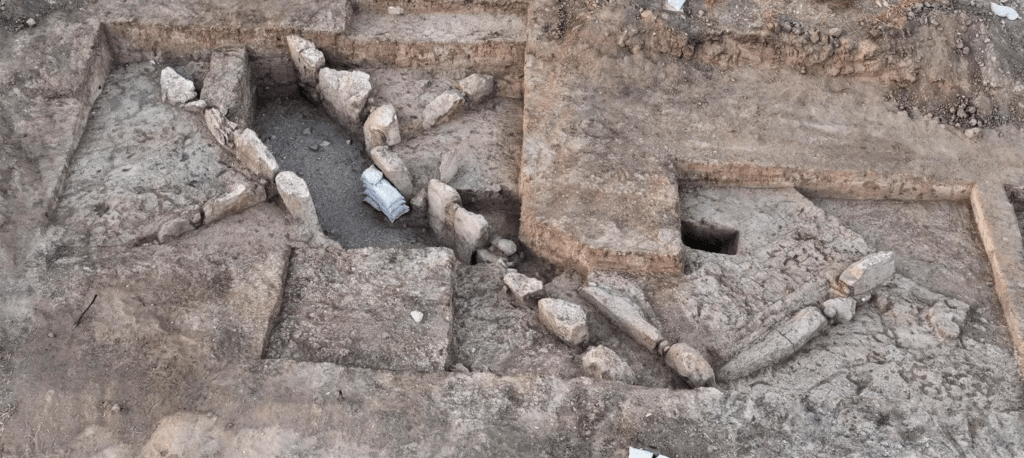Game-Changing Curator and Museum Director Carolyn Christov-Bakargiev to Retire
Carolyn Christov-Bakargiev, one of the world’s most influential curators and museum directors whose quirky exhibitions are much-loved by many, will retire at the end of this year.
Her retirement was announced by the Castello di Rivoli Museum of Contemporary Art, the Turin institution where Christov-Bakargiev has worked for over two decades and which she has led since 2016. The museum promised a search for a new director that would begin on January 1, 2024.
Christov-Bakargiev is a giant of the international art scene, having organized an array of celebrated biennials. Her venturesome, offbeat sensibility has made her an influence for a number of curators working today.
As she once put it in a New York Times profile, “I am that person in the art world who says, ‘The field of art doesn’t exist anymore,’ in the way someone might have said, ‘The Roman Empire doesn’t exist anymore, Mr. Charlemagne.’”
Her biggest curatorial endeavor was Documenta 13, the 2012 edition of the famed exhibition that takes place once every five years in Kassel, Germany. Her edition, the second-ever Documenta curated by a woman, also set parts of the show in far-flung locales like Alexandria and Banff—a mode that was later repeated in Documenta 14, which was partially staged in Athens—and also involved a parallel exhibition in Kabul.
The show, according to Documenta, “caused confusion in the press prior to the exhibition with her ‘non-concept,’ eco-feminism, dog calendars, an absurd title that no one could remember (The dance was frenetic, animated, clattering, twisted, and lasted a long time).”
Her 2015 edition of the Istanbul Biennial, titled “SALTWATER: A Theory of Thought Forms,” likewise spun what could have been just another big international show in ever stranger directions. She sprinkled the show across nearby islands and addressed the Armenian genocide and salt.
“There are not so many works that are about salt, because the artists don’t have to do things about salt,” she told ARTnews at the time. “For me salt is one of the codes. It’s about what’s under the surface of things. Salt—you think of it as something you can’t eat too much of, or you can’t drink salt water because you would die.”
In her capacity as director and curator at various institutions, including the Villa Medici in Rome and MoMA PS1, Christov-Bakargiev undertook the typical activities expected of one in her job. She curated acclaimed shows and gained the support of many artists. But she also demonstrated that a museum director need not be boring in order to thrive.
Her long history with the Castello di Rivoli dates back to 2002, when she was hired as chief curator, and has since then, with a few gaps when she was not at the museum, continued an array of off-kilter exhibitions.
In 2017, she organized a 400-work show about colors and emotions that was so vast, it also appeared at the Galleria Civica d’Arte Moderna e Contemporanea in Turin, where she was also director from 2016 to 2018. It featured pieces ranging from ancient Tantra drawings to videos by Hito Steyerl. A show in 2019 purported to feature a work that may have been the actual Salvator Mundi by Leonardo da Vinci, and more recent years have brought a sustained series of conversation with Beeple, with whom she forged ties long before any other art institution did. Under her leadership, the Castello di Rivoli helped a refugee escape Afghanistan and was turned into a Covid vaccination site.
Her activities at the Castello di Rivoli could occasionally take on a more traditional feel, as they did when, in 2017, she facilitated the museum’s acquisition of the $570 million Cerruti collection, which includes several important works by Giorgio de Chirico. A grouping of exhibitions at the Castello di Rivoli have since showcased gems from the collection.
Other shows by Christov-Bakargiev included the 2008 Biennale of Sydney and the 2000 edition of Greater New York, the recurring show she founded at MoMA PS1 that spotlights artists active in the city.
True to form, Christov-Bakargiev will remain active, even during her retirement. She will lead what a release called “a major multi-year research and publication project on her archive and almost forty-year practice,” as well as an exhibition about the Arte Povera movement that will open in Paris next year and the catalogues raisonnés of Fabio Mauri and Michelangelo Pistoletto.
“I would especially like to extend my heartfelt thanks to all the artists I have had the privilege to work with for their unwavering dedication and generosity during my tenure,” she said in a statement. “Finally, I look forward to returning to this magical and unique place as a member of the audience.”



